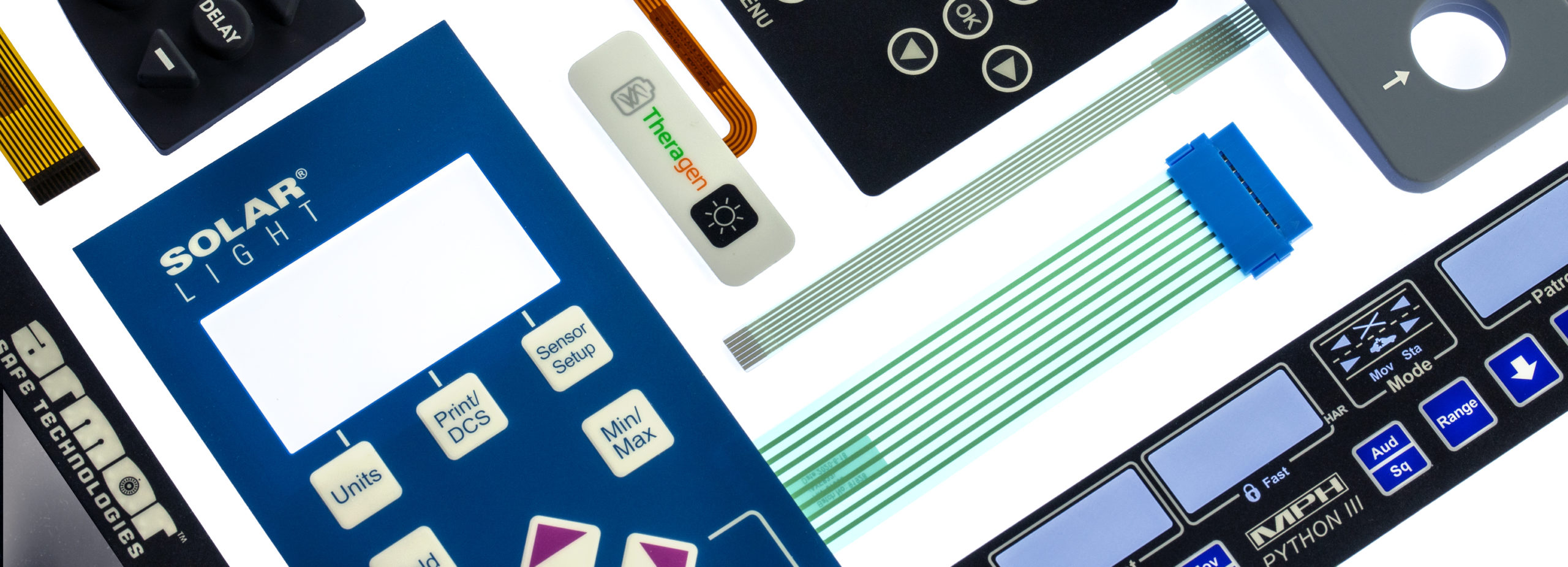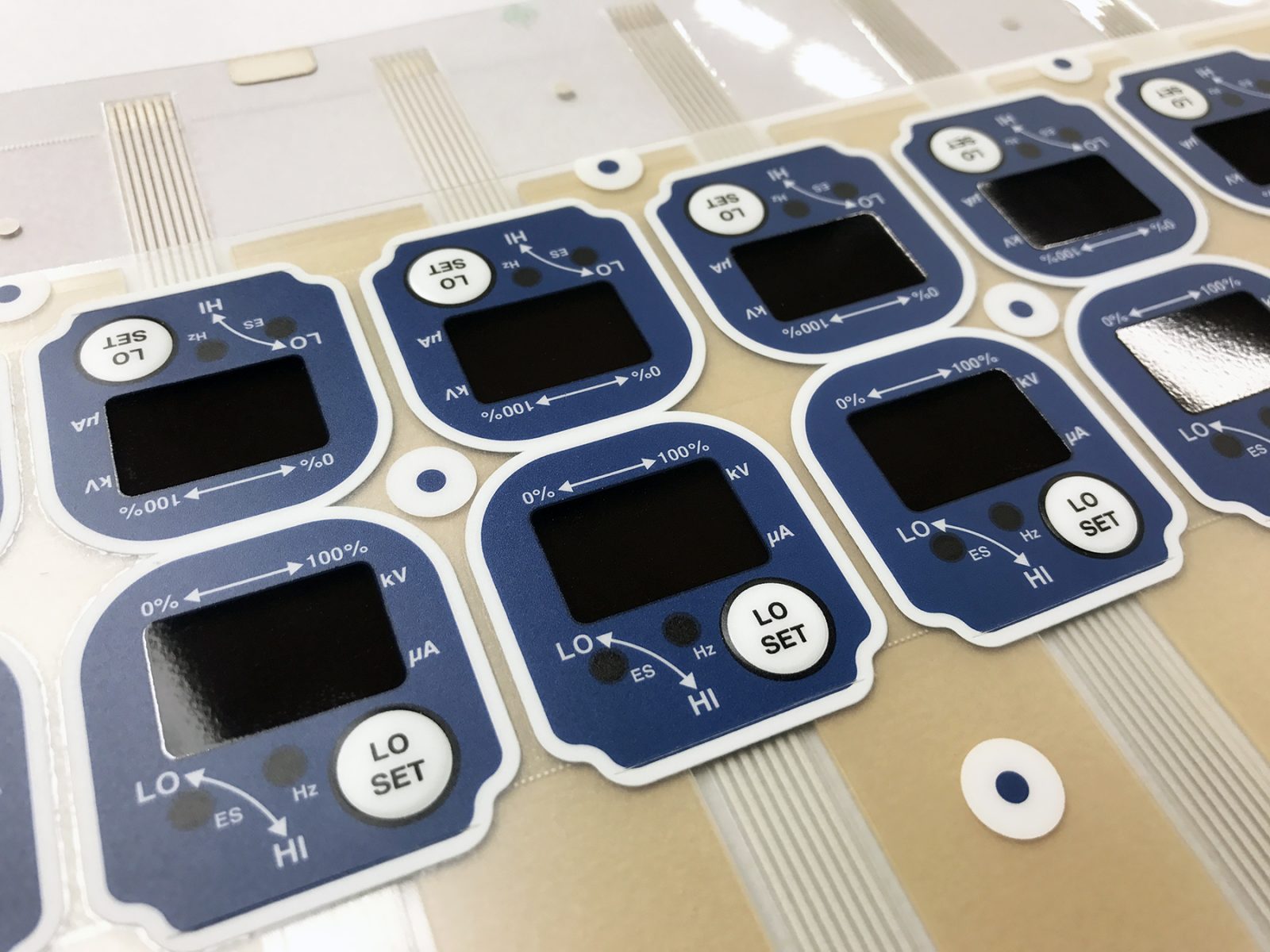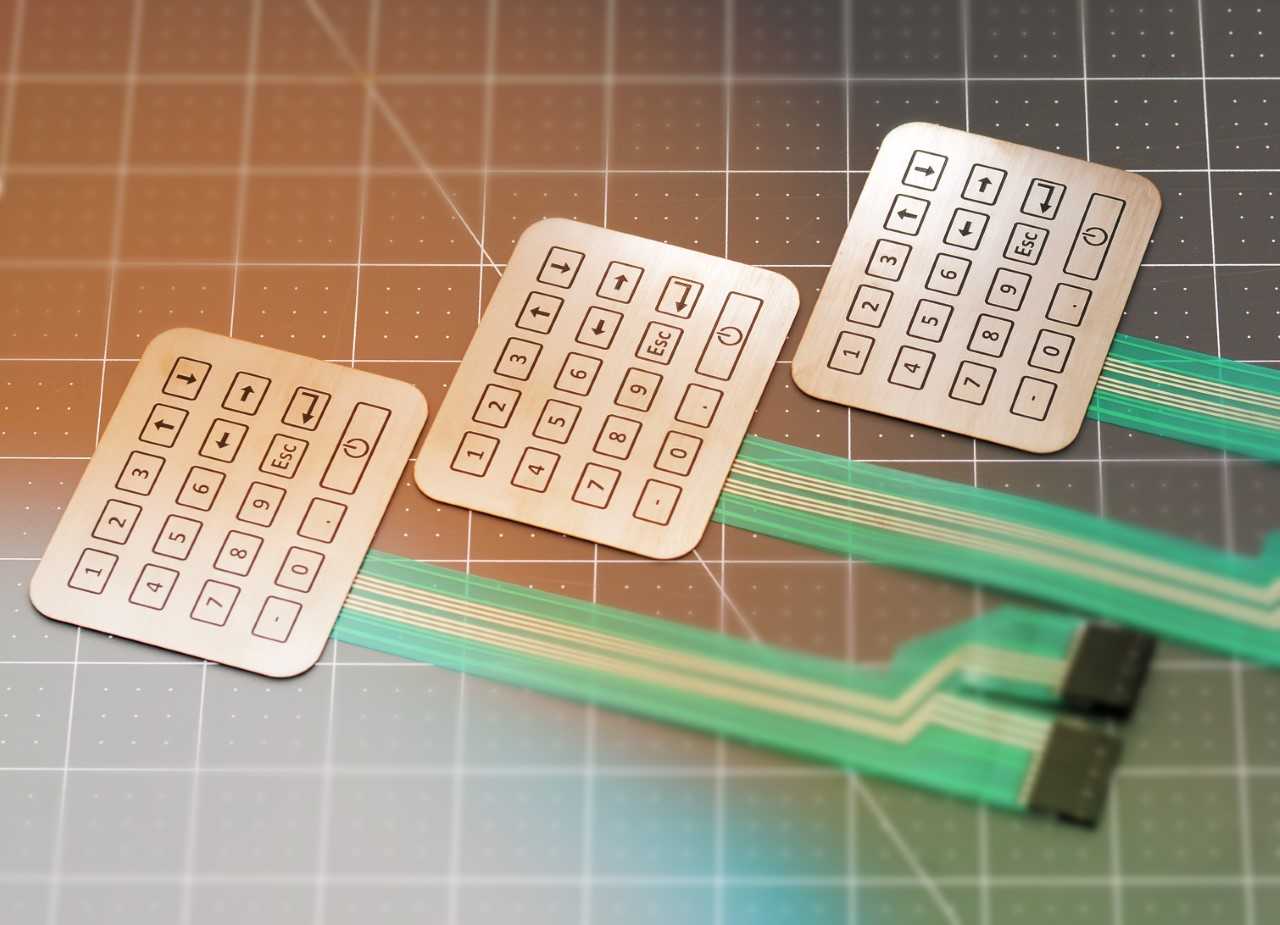Partnering with an experienced membrane switch manufacturer can simplify your production process.
Partnering with an experienced membrane switch manufacturer can simplify your production process.
Blog Article
All Concerning Membrane Layer Change: Understanding Its Style and Performance
When you think about the control interfaces in modern-day gadgets, membrane layer buttons often come to mind. Let's explore what sets membrane changes apart from various other control systems.
What Are Membrane Layer Buttons?

Membrane layer switches can additionally be tailored regarding form, dimension, and graphics, allowing makers to create one-of-a-kind interfaces customized to particular products. Overall, membrane layer switches play a significant role in boosting user experience throughout a large selection of applications.
How Membrane Changes Work
When you push a trick on a membrane layer button, it activates a straightforward yet reliable mechanism. membrane switch manufacturer. The top layer, commonly made of flexible product, pushes down onto a conductive layer under it.
You'll observe that the tactile comments varies based upon the switch style, supplying either a soft click or a much more noticable action. Once you release the secret, the membrane layer returns to its initial position, reopening the circuit and stopping the signal. This procedure takes place virtually instantly, ensuring a receptive individual experience.
Membrane layer buttons are preferred as a result of their longevity and resistance to dust and moisture, making them suitable for numerous applications, from home devices to clinical devices. Comprehending this procedure assists you value their widespread usage.
Trick Elements of Membrane Switches
Recognizing the key parts of membrane switches is fundamental for understanding their capability and layout. The protective layer guards against ecological factors and wear, extending the button's lifespan. By understanding these elements, you'll obtain insight right into how membrane layer changes run and their significance in various applications.
Materials Made Use Of in Membrane Change Layout
The performance and longevity of membrane layer switches heavily depend on the products made use of in their layout. You typically come across polyester and polycarbonate as key substrates because of their outstanding toughness and versatility. These materials resist scrapes and chemicals, making them ideal for demanding atmospheres.
The conductive layers commonly utilize silver or carbon, selected for their dependability and conductivity. membrane switch manufacturer. Silver provides remarkable efficiency, while carbon is an economical option. For the overlay, you could think about a matte or glossy finish, relying on your visual demands and user experience
Make particular to select adhesives that endure environmental factors like temperature level and moisture. Selecting the best products will certainly ensure your membrane layer button stands the examination of time.
Layout Considerations for Membrane Layer Switches
While designing membrane layer buttons, it's important to think about various elements that influence their functionality and user experience. Begin by concentrating on the design and switch size; ensure they're user-friendly and very easy to navigate. Consider the tactile feedback you want to provide-- will customers need a noticeable click or a softer touch? Furthermore, assume concerning the products you'll use, as they'll affect sturdiness and aesthetics.
Validate your design accommodates ecological elements, like dampness or temperature variants, which can affect performance. By thoroughly thinking about these aspects, you'll create a membrane layer switch that boosts functionality and contentment.
Applications of Membrane Buttons
Membrane buttons are functional components located in numerous applications, from commercial tools to consumer electronics. You'll see their effect in makers that call for long lasting user interfaces and in gadgets that gain from smooth styles. Comprehending these applications assists you value the functionality and usefulness of membrane switches in daily technology.
Industrial Tools Use
When you're looking to enhance the capability of industrial tools, membrane switches use a trusted service that combines resilience with user-friendly layout. These switches are best published here for severe settings, offering resistance to dirt, moisture, and chemicals. Accept membrane switches to simplify your procedures and boost general performance.
Consumer Electronic Devices Assimilation
In the domain of consumer electronic devices, membrane buttons play a necessary role in enhancing individual communication and tool performance. You'll discover them in devices like microwaves, push-button controls, and gaming consoles, supplying a smooth way to communicate with innovation. Their streamlined design enables for easy integration right into different items, making controls instinctive and user-friendly. With their ability to incorporate graphics and backlighting, you can appreciate a contemporary visual that enhances the tool's overall look. Membrane layer click here now switches likewise assure longevity and resistance to dirt and wetness, expanding the lifespan of your electronic devices. By selecting membrane layer buttons, you boost not just the functionality yet also the design of your gadgets, making daily interactions smooth and enjoyable.
Benefits and Disadvantages of Membrane Layer Switches
While membrane layer buttons provide an array of benefits, they additionally come with some drawbacks that you need to take into consideration. One considerable benefit is their portable design, making them excellent for space-constrained applications.

Membrane switches can have a shorter life-span compared to mechanical buttons, specifically under hefty usage. They can likewise be much less tactile, which could impact customer comments during procedure. Balancing these pros and disadvantages will assist you identify if membrane layer buttons are the appropriate fit for your task.
Often Asked Inquiries
For How Long Do Membrane Layer Switches Usually Last?
Membrane switches typically last in between 5 to ten years, check this site out depending on use and environmental problems. You'll want to assess factors like wear, direct exposure to dampness, and temperature level fluctuations to gauge their longevity effectively.
Can Membrane Changes Be Customized for Details Styles?
Yes, you can personalize membrane layer switches to fit specific styles (membrane switch manufacturer). You'll have the flexibility to choose shades, forms, and designs that match your job's demands, guaranteeing they blend seamlessly with your total aesthetic
What Is the Cost Array for Membrane Layer Switch Over Production?
The price range for membrane button manufacturing generally drops between $1 and $10 each, depending on elements like design intricacy, amount, and materials. You can get quotes from producers to discover the very best option.

Are Membrane Layer Switches Over Waterproof or Resistant?
Membrane switches can be made to be waterproof or immune, depending upon materials used and construction approaches. If you require them for damp atmospheres, guarantee you define those demands during the style procedure.
How Do Membrane Changes Contrast to Typical Switches?
Membrane switches are usually thinner and more versatile than traditional buttons, supplying a streamlined layout. They're often easier to cleanse and integrate, yet could not provide the responsive responses you're used to with mechanical options.
Conclusion

Report this page